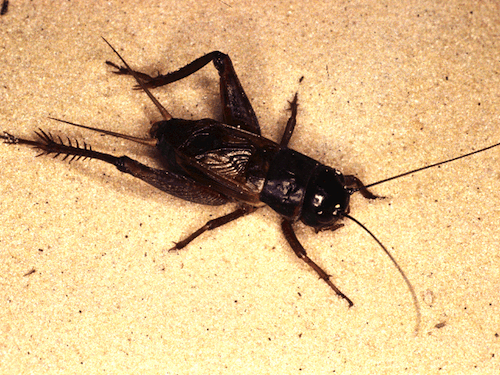
Beautiful book, if you can get a hold of a copy: Bashō and His Interpreters (Makoto Ueda, Stanford University Press, 1992). Listen to how it works:
• Top of each page, a chaste translation, in three lines, of a Bashō haiku.
• Underneath: the Japanese original transliterated into Roman letters + a word-for-word translation.
• Under that, a note explaining the conditions under which the poem was written and unpacking any allusions, literary and otherwise.
• And finally: a set of between five and fifteen brief remarks made by other haiku masters and connoisseurs, on the subject of the haiku in question.
The remarks are often wildly at variance with each other, yet are almost always expressed with urbanity and confidence. The result for the reader (I probably don’t have to tell you) is an immense deepening in understanding, not only of the poems, but of the intellectual climate in which they were (and continue to be) received.
For example:
how piteous!
under the helmet
a cricket
My notes tell me this poem was conceived on 8 September 1689, when Bashō visited Tada Shrine in Komatsu. There, he saw the helmet of the legendary warrior Saito Sanemori (12th century). The story goes that Sanemori, unwilling to allow his enemies to despise him as an old man, dyed his hair black before going into battle. During the clash, Sanemori’s head was struck off, only to be discovered later by an enemy general, Higuchi Jiro, who cried out “Muzan ya na!” (“How piteous!”). The story is told over and over in Japanese literature; there’s a famous no play about it; and so on and so forth.
But here’s where the commentators come in. One says the cricket is Sanemori’s soul. One says the cricket reminds Bashō of Sanemori because crickets look like old men. One says there is no cricket. One says the cricket is like Sanemori because late autumn crickets are vigorous. Another implies the cricket is appropriate because crickets are pitiful. One says the cricket is the enemy general saying “How piteous!” (It should be noted, by the way, that these commentators are not arguing with each other; each one simply “calls it like he sees it.”)
Now read the original poem again. There’s a lot going on there. And suddenly you see: If you read the poem by itself, with no help and no tutor, you’re apt to respond with something like, “And…?” But if you read the poem like a Japanese expert, it turns out to be this iggskwizzit and multiplex thing….
how piteous!
under the helmet
a cricket
How wonderful this book is, this structure! And what a good idea it was to include the transliteration. In the present case, it’s nice because it allows you to observe that the Japanese word for cricket—kirigirisu—is deliciously chirpy in itself. (Indeed, one perhaps notices afresh that the English word for a cricket hints at a certain onomatopoeia as well….)
The only, only thing wrong with this book is it’s kind of expensive. Paperbacks run about $30 online. But still. You wanna be Japanese or not?
OK. So you know what to do.
Poet Anthony Madrid is the author of the chapbook The 580 Strophes (2009) and the full-length collection...
Read Full Biography

